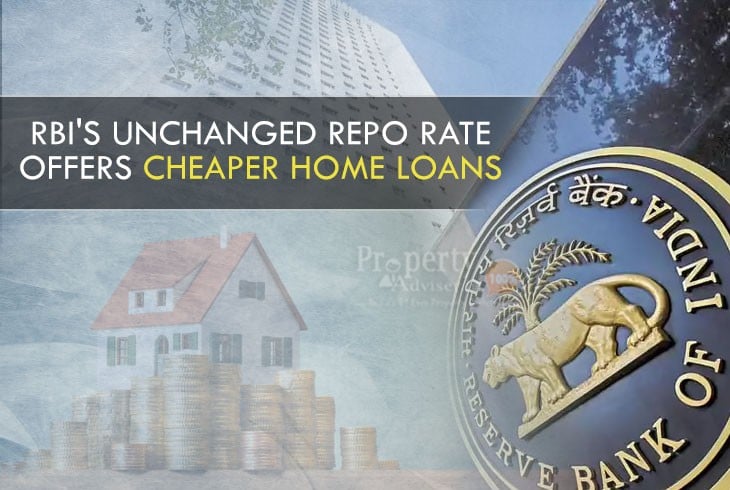Home loans will remain extremely affordable, and it is expected that more home buyers will make a purchase decision now. At the Monetary Policy Committee (MPC) meeting on 4 December, based on an assessment of the current and changing macroeconomic situation, the Reserve Bank of India (RBI) kept the repo rate unchanged at 4%.
Therefore, with the Marginal Standing Facility (MSF) rate and the Bank Rate at 4.25 percent, the reverse repo rate on LAF (Liquidity Adjustment Facility) remains unchanged at 3.35 percent. The members of the MPC committee unanimously voted in favour of this proposal.
RBI's Unchanged Repo Rate
NAREDCO & ASSOCHAM President Dr Niranjan Hiranandani said that home loans would continue to remain at attractive rates, and this should work particularly well for the sentiment of home buying. The repo rate remains unchanged at 4%, and the reverse repo rate remains unchanged at 3.35% as well. While pointing at the inflation figures, the RBI needs to have a tough stance and try to taper it further to alleviate the supply-side pressure.
The estimated real GDP growth for FY21 at -7.5 % vs -9.5 % earlier augurs well for the recovery theme. Q3 growth at 0.1 % and Q4 at 0.7 % stands out the RBI Governor's comment on the 'gradually improving' market sentiment of manufacturing firms. A positive development is the RBI Governor's plan to extend on-tap TLTROs to include other sectors. He noted that the main thing is that economic constraints have begun to ease.
The MPC also agreed to continue with the stimulative role as long as possible to revive growth on a sustainable basis and minimize the risks of COVID-19 on the economy, at least during the current financial year and to next financial year while ensuring that inflation remains within the target in the future.
Plans to Enhance Financial Sector Organisations
RBI Governor Shaktikanta Das stated that the year 2020 has been challenging. The skills and inner reserves of strength, patience and confidence have been checked and extended. As the year comes to a close, as we were struggling against the pandemic, it would be fitting to analyze the actions and results.
They are continually concentrating on changing laws and enhancing supervision. Financial sector organizations such as banks and NBFCs should also give the standard of governance, risk management and internal controls the highest priority. In matters relating to financial sector stability, they are the first line of defence. The policies have resulted in the lowest weighted average borrowing costs in 16 years, and the highest reported weighted average public debt stock maturity.
The decision to withdraw the policy rate was in line with the real estate sector's expectations as it is just recovering and only bouncing back to the levels of Pre-COVID-19.
The initial signs of improvement were seen in residential real estate, with sales rising by 34 % in Q3 2020 compared to Q2 2020. The RBI's decision to keep the rate would allow homebuyers to take advantage of the lowest mortgage loans prevailing. Green revival shoots armed with other incentives such as the reduction of stamp duties in some states, and the flexibility of developers to deliver the best prices/payment schemes would further lead to improving property sales.
The new home loan rates are the lowest over the last four decades, as per experts. This lower interest rate scheme will continue for another six to twelve months, offering homebuyers the best purchase opportunity.
The apex bank introduces much-needed liquidity, and the government and developers provided numerous concessions that include stamp duty relaxations and lower price points. All these measures have provided potential homebuyers with strong investment opportunities.
By: Shailaja K













